Legends of Race and Rally |
|
 |
|
| |
|
The Beginning of Racing
Racing began soon after the construction of the first successful gasoline-fueled automobiles. The first race ever organized was on April 28, 1887 by the chief editor of Paris publication Le Vélocipède, Monsieur Fossier. It ran 2 kilometers from Neuilly Bridge to the Bois de Boulogne. It was won by Georges Bouton of the De Dion-Bouton company, in a car he had constructed with Albert, the Comte de Dion, but as he was the only competitor to show up it is rather difficult to call it a race.
Paris-Rouen - The World's First Motor-Race
On July 22, 1894, the Parisian magazine Le Petit Journal organised what is considered to be the world's first car race from Paris to Rouen. Sporting events were a tried and tested form of publicity stunt and circulation booster. Pierre Giffard, the paper's editor, promoted it as a Competition for Horeseless Carriages (Concours des Voitures sans Chevaux) that were not dangerous, easy to drive, and cheap during the journey. Thus it blurred the distinctions between a reliability trial, a general event and a race, but the main prize was for the first across the finish line in Rouen. 102 people paid the 10 franc entrance fee.
Sixty nine cars started the 50 km (31 mile) selection event that would show which entrants would be allowed to start the main event, the 127 km (79 mile) race from Paris to Rouen. The entrants ranged from serious manufacturers like Peugeot, Panhard or De Dion to amateur owners, and only 25 were selected for the main race. The race started from Porte Maillot and went through the Bois de Boulogne. Count Jules-Albert de Dion was first into Rouen after 6 hours and 48 minutes at an average speed of 19kmph. He finished 3’30” ahead of Georges Lemaître (Peugeot), followed by Doriot (Peugeot) at 16’30”, René Panhard (Panhard) at 33’30’’ and Émile Levassor (Panhard) at 55’30”. The official winners were Peugeot and Panhard as cars were judged on their speed, handling and safety characteristics, and De Dion's steam car needed a stoker which was forbidden.
Early Races
In 1895, the Paris-Bordeaux-Paris Trial was held and this was the first real race as all competitors started together. The winner was Émile Levassor in his Panhard-Levassor 1205 cc model. He completed the course (1,178 km or 732 miles) in 48 hours and 47 minutes, finishing nearly six hours before the runner-up. The first regular auto racing venue was Nice, France, run in late March 1897 as a "Speed Week." To fill out the schedule, most types of racing event were invented here, including the first hill climb (Nice - La Turbie) and a sprint that was, in spirit, the first drag race. An international competition, between nations rather than individuals, began with the Gordon Bennett Cup in auto racing.
The first auto race in the United States took place in Chicago, Illinois. The course went from the South side of the city, North along the lakefront to Evanston, Illinois and back again on November 28, 1895 over a 54.36 mile(87.48 km) course, with Frank Duryea winning in 10 hours and 23 minutes, beating three petrol-fueled City to city racing
With auto construction and racing dominated by France, the French automobile club ACF staged a number of major international races, usually from or to Paris, connecting with another major city, in France or elsewhere in Europe. These very successful races ended in 1903 when Marcel Renault was involved in a fatal accident near Angoulême in the Paris-Madrid race. Nine fatalities caused the French government to stop the race in Bordeaux and ban open-road racing.
The First Purpose Built Racing Circuits
The Milwaukee Mile is the oldest motor racing track in the world, with racing being held there since 1903. It was not, however, purpose built for motor racing, starting life as a one-mile (1.6 km) horse racing track in the 19th century. Brooklands in Surrey, England was the first purpose built motor racing venue, opening in June 1907. It featured a 4.43 km (3 mile) concrete track with high-speed banked corners. Brooklands was also a centre of the aviation industry, with Vickers setting up a factory and aerodrome there during World War 1. The racing circuit was closed in 1939 as war-time aircraft production took over. Damage done to the track during World War 2 meant the track never reopened for racing. Many believe that Brooklands served as the inspiration for the Indianapolis Speedway, which opened in 1909.
1910-1950
The 1930s saw the transformation from high-priced road cars into pure racers, with Delage, Auto Union, Mercedes-Benz, Delahaye, and Bugatti constructing streamlined vehicles with engines producing up to 450 kW (612 hp), aided by multiple-stage supercharging. From 1928-1930 and again in 1934-1936, the maximum weight permitted was 750 kg, a rule diametrically opposed to current racing regulations. Extensive use of aluminium alloys was required to achieve light weight, and in the case of the Mercedes, the paint was removed to satisfy the weight limitation, producing the famous Silver Arrows.
Racing in the 1950s
On October 5, 1951, the FIA decided to extend the life of the 1.5-litre supercharged, 4.5-litres un-supercharged Formula 1 to December, 1953. A new formula 1, for supercharged cars up to 750 cc's and un-supercharged cars up to 2500 cc's was introduced as of January, 1954. However, only Ferrari and BRM had really rapid F1 cars, and the BRM still could not be made sufficiently reliable to present any serious competition. Faced with the prospect of a series of Ferrari wins by forfeit, organisers decided to make their races, including the Grande Epreuves, Formula 2 events for cars up to 500 cc's supercharged and 2000 cc's un-supercharged.
The British and others produced a collection of Formula 2 cars of varying origins, while Ferrari still appeared to have the upper hand, with excellent cars and excellent drivers. The Championship opened with the Swiss Grand Prix at Berne, won by Piero Taruffi (works Ferrari), followed by Rudi Fischer (private Ferrari) and Jean Behra (Gordini). The best English performances were put up by Wharton ( Frazer-Nash) and Brown (Cooper-Bristol). Ascari was at Indianapolis and Fangio was signed up to drive for Maserati, who had not yet produced their car.
The second round was at Spa-Francorchamps. Maserati was not represented, Fangio having crashed at Monza. The race was won by Ascari. Farina was second, Manzon (Gordini) was third, and Hawthorn (Cooper-Bristol) fourth, after his debut in European racing by turning on a spectacular drive with Taruffl. At this stage, Taruffi and Ascari each had nine points, Farina and Fischer six, Manzon and Behra four, Hawthorn and Wharton three, and Brown and Frere two.
There was some confusion over which French Grand Prix was the championship event, but the FIA eventually awarded it to the ACF's event at Rouen, which was a 1-2-3 victory for Ferrari, followed by the Gordinis of Manzon and Trintignant, and Collins' HWM. The British Grand Prix again saw the Rampant Horse victorious, with Ascari scuttling away to a clear victory, followed by Taruffi and Hawthorn in a Cooper. Ascari again swept the track at the Nurburgring, with only Claes (HWM) splitting the Ferrari ranks in fifth place. Ferrari was 1-2-3 again at Zandvoort ( Ascari, Farina, Villoresi), giving Ascari the Championship. Only Monza remained, and Ascari again won. However, the new Maserati appeared, and Gonzalez drove brilliantly to come in second, after leading the race for some distance.
For 1953 Hawthorn joined Ferrari, but again the championship went to Ascari, who won at Buenos Aires, Zandvoort, Spa, Silverstone and Berne. The season saw two great races, one at Rheims, where Hawthorn defeated Fangio on the last corner, and Monza, where Fangio won after an epic battle with Ascari and Farina, with Marimon and Villoresi on different laps also mixing it. On the last corner there was quite an incident with Ascari and Marimon spinning off, baulking Farina, and a very surprised Juan Manuel slipping through to take the flag. The old Formula really went out in a blaze of glory!
The 750 cc / 2500 cc Formula
In 1954 the 750 cc / 2500 cc Formula made its debut, with Mercedes fielding the fabulous W196 cars, from the French GP on, Ferrari his Squalos, and Maserati the great 250F. Fangio - Maserati-mounted - won the Argentine Grand Prix, assisted by a couple of convenient falls of rain, and a rather curious decision by officials that the rule concerning the number of mechanics working on cars did not apply to him. At Spa, Fangio gave one of his brilliant exhibitions, bringing his crippled Maserati in ahead of Trintignant, Moss and Gonzalez. Rheims, of course, marked the re-entry of Mercedes-Benz into GP racing, with an overwhelming victory by Fangio, with team-mate Kling second, and Manzon ( Ferrari) third.
Silverstone was a Mercedes debacle, Fangio only managing to bring his drum-scarred car into fourth, while Gonzalez, "The Pampas Bull", had a clear victory. The "Einsitzer" Mercedes appeared for Nurburgring, and, of course, Fangio won while Kling incurred "Big Alfred's" wrath by bending his car. Gonzalez, upset by the death of his friend Marimon in practice, handed his car over to Hawthorn, who came second, with Trintignant third.
Fangio, Moss, Hawthorn and Gonzalez staged a dice at Berne until Moss retired, and Hawthorn stopped at his pit with a faulty fuel pump. Gonzalez still pursued Fangio, but the bow-legged Argentinian had the measure of his compatriot, and went on to a win which gave him the Championship. The Italian Grand Prix at Monza again saw a thrilling race. Kling led Fangio and Moss until he spun off, but the latter two were soon joined by Ascari and Gonzalez, until Gonzalez blew up. But the silver-haired veteran Luigi Villoresi and Hawthorn joined the fray, Villoresi going to the front, to the delight of the Italian crowds, until he in turn, blew up.
Moss went to the lead, then lost it to Ascari, then regained it when Ascari dropped a valve. It was Stirling's day, and he roared along, increasing his lead every lap, until, nine laps from the finish, his oil tank split. He got going again in second place and carved great hunks out of Fan-gio's lead until a little over a mile from the finish his engine seized. The V8 Lancias appeared at Barcelona, at long last, but they retired from the race, Villoresi with no brakes and Ascari with no clutch, and Hawthorn won, followed by Musso and Fangio, who nursed his ailing car to the finish. Officine Maserati's year started badly in 1955, with Moss signing up with Mercedes. Hawthorn agreed to drive for Vanwall. Maserati had Behra, Schell and possibly Musso, while Ferrari had Gonzalez, who had been involved in a nasty accident while practising for the RAC Tourist Trophy in 1954, and the wily veteran Giuseppe Farina.
The 1954 F1 Season
The season opened at Buenos Aires, and the race made history. The temperature soared, and drivers chopped and changed cars, taking them almost in rotation. Drivers were coming in, handing over their cars, and recovering in the shade until another exhausted driver came in. Moss came in to have a fuel blockage investigated, lay down in the shade near the pits, and was carted off by ambulance men, who thought he had collapsed. And through it all drove Fangio, the only person to drive one car the whole distance. Fangio won, followed by Gonzalez, Trintignant and Farina in second place, Farina/Maglioli/Trintignant third and Moss/Herrmann/Kling fourth. Points were divided as follows: Fangio 9 (win and fastest lap), Farina and Trintignant 3 1/3 each, Gonzalez and Mieres two each, Maglioli 1-1/3, Moss, Kling and Herrmann one each.
The 1955 F1 Season
Mercedes-Benz invaded Britain in 1955 to take first four places in British GP at Aintree. Here's the start of that historic race, with Moss on the outside getting the better of Fangio. Popular belief is that M-B team orders that day were to let Moss win, which he did. Trintignant won Monaco, after the Mercedes threat evaporated, from Castellotti, whose Lancia was troubled by fading brakes. This was the race in which Ascari went into the harbor. He escaped unhurt, only to die at Monza a few days later in one of racing's most mysterious accidents. After Ascari's death, Lancia announced their withdrawal from racing, but lent Castellotti a car for Spa. But the hot-headed Italian retired with a split gearbox, while Fangio won from Moss, a pattern that was to be repeated that year. It was repeated at Zandvoort, reversed at Aintree - where Fangio tailed Moss across the line in what many observers claimed was a prearranged finish. Lancia handed their entire stock of racing equipment to Enzo Ferrari, but Fangio won at Monza to take another world championship. At the end of 1955, Mercedes Benz withdrew from racing.
The 1956 F1 Season
For 1956, Scuderia Ferrari snapped up Fangio and also signed on the strong team of Collins, Musso and Castellotti. Maserati had Moss and Jean Behra. Hawthorn and Brooks went to BRM, Schell and Trintignant to Vanwall. Fangio won at Buenos Aires, followed by Behra and Hawthorn, who for the occasion, was driving the Owen Organisation's private 250F Maserati. At Monaco, Moss won - after Fangio damaged his rear suspension in one of his rare misdemeanors - and Collins was flagged in to give Fangio his car after the champion virtually drove his damaged car to a standstill. During practice for the Belgian GP at Spa, Fangio turned in the first-ever lap at over 200 kph and was favorite for the race, but his transmission packed up and Collins went on to win, followed by the Belgian journalist Paul Frere, who had been talked into driving a Ferrari after he arrived at the circuit to do his usual report on the GP. Moss was third and Schell a good fourth after showing the potential of the Vanwall.
Schell turned on an even better show at Rheims, for he roared into the lead and, through some slip-up, everyone thought he was a lap or more behind. He was busily extending his lead when Fangio realised what was going on. In the ensuing battle, Schell set a new lap record, but Fangio took command as Schell's car began to fail. Schell's record did not last long however, as Moss hurtled around in 2 min 25.9 sec - nearly three seconds faster than the Vanwall's best. Then, Fangio dropped the time by one-tenth of a second while trying to catch Collins, Castellotti and Behra, who had passed him while he was in for a pit stop. Collin's win took him to the top of the championship table with 19 points, while Behra had 14 and Fangio 13.
Fangio won at Silverstone after an exciting battle for the British GP with Moss, who had to call into his pits to get all six cylinders firing again and later, while in second place, ran out of fuel. Collins was second and Behra third and Collins now had 22 points, one ahead of Fangio. And so the "circus" shifted to Germany where the irrepressible Hprace Gould broke a throttle connection on his private Maserati way out on the circuit and borrowed a safety pin from a lady spectator to effect a repair. He set off towards the pits shouting "Thank God you weren't Wearing elastic ones". Meanwhile, Collins and Fangio were staging an exhibition with Moss coming on stage occasionally. After nine laps, Collins went out with a fractured fuel tank and he took over de Portago's Ferrari only to ditch this car near the Karussel. Fangio had been pressing on at a great pace and won from Moss and Behra.
The 1956 Italian GP saw a rare gesture of sportsmanship - one which enabled Fangio to win yet another world championship. During a tremendously exciting race, in which Moss, Schell, Fangio and Collins swopped places repeatedly, Fangio's steering suddenly became erratic and he came into the pits for the car to be repaired. Musso was signalled in, but did not respond and when he elected to stop he remained in his seat so that Fangio could not take over. Then Collins was brought in for a tyre check and the team manager made a half-hearted suggestion that Fangio should take the car away to try to catch the leader, Moss. Collins did not hesitate and jumped from the cockpit to hand over to a delighted Fangio, who thereafter did his utmost to catch Moss' Maserati and failed by only five seconds. But the second place gave Fangio his fourth world title and he finished on 29 points compared to Moss' 27 and Collins' 25.
The 1957 F1 Season
At the start of 1957, there were quite a few changes. Fangio left Ferrari to go to Maserati and Moss went to Vanwall, where he had Tony Brooks as partner. Ferrari had Collins, Hawthorn, Castellotti and Musso. At Buenos Aires, Fangio opened his account after most of the Ferraris had gone out with mechanical failure. In between the Argentine and Monaco GP's, some significant events happened. Castellotti was killed testing a car, Moss turned in an epic drive at Syracuse -to- show the Vanwall's mettle, Stuart Lewis Evans made a staggering F1 debut and Ferrari unveiled a new F2 V6 machine.
Monaco was a "smashing" race, with Moss, Collins and Hawthorn crashing in a sensational incident along the harbor front. Fangio drove through the rubble to win and Brooks drove a steady race to finish second. Fangio, with no opposition - Moss and Brooks were ill - won the French GP at Rouen to give him three wins in a row. At Aintree in the British GP the crowd went wild with excitement when Moss, who took over Brooks' car when his own failed, won after Behra's clutch had disintegrated and Hawthorn's car blew a tyre after running over metal left behind by Behra.
The Nurburgring was the scene of another classic race in this very exciting year of motor racing and the German GP established beyond all doubt that there never was a driver quite like Fangio. In the course of the race, the 47-year-old champion smashed the lap record no less than ten times in a relentless pursuit of Collins and Hawthorn after a minute's pit stop to change tyres. The "master" caught the Ferraris to win by three seconds from Hawthorn after a superlative drive.
Because of the cancellation of some events, the Pescara GP was given grande epreuve status and gave Moss his second win for the season. Fangio was second and Schell third in a Maserati, and Moss broke all records on the difficult 16-mile circuit. Fangio's place meant he had won the title for the fifth time. Monza provided a unique spectacle, with all three Vanwalls on the front row of the grid along with Fangio's V12 Maserati. Despite Fangio's efforts, the Vanwalls were definitely quicker and Moss took victory after a great year for the British cars. Fangio was again second. The year finished on a sorry note when Officine Maserati announced their withdrawal from grand prix racing.
The 1958 F1 Season
Many people were shaken when, at the beginning of 1958, the tiny 2.2 "giant-killer" Coopers appeared at Buenos Aires and Monaco to annex the first two grande epreuves. Moss won the Argentine race, while Trintignant scored at Monaco. But thereafter, Vanwall were practically invincible. Moss won at Zandvoort and Oporto, Brooks at Spa, the Nurburgring and Monza and Moss topped it off by winning the final round at Casablanca. But Hawthorn won at Rheims and Collins at Silverstone and Hawthorn had enough placings and fastest laps to pip Moss by one point to become the first Briton to win the world championship. The excitement of this year-long battle was tempered by the deaths of Peter Collins - which probably influenced Mike Hawthorn's decision to retire at the end of the season - Musso and Lewis-Evans.
Further Reading
There is plenty of information on Unique Cars and Parts for the race fan. Australian car enthusiasts will enjoy the results for Bathurst, which includes many race programs, memorable moments, along with driver analysis and circuit details. There are also results and analysis for the Redex Trials, the Ampol and Mobilgas Trials, and the Repco Reliability Trial of 1979. There are results for Formula One, starting with the 1950 event. There is a history of World Land Speed Records, a history of the Targa Florio, Mille Miglia, and full results from Le Mans starting with the 1923 event. You can review the history of the Sports Car, or for that matter, the History of the Automobile.
Also see: Legends of Motorsport - USA Site | Early Australian Drag Racing | Australian Motorsport Pioneers |
 |
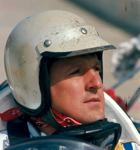 |
|
b. 1935
A. J. Foyt was born on 16 January 1935 at Houston, Texas. Anthony Joseph Foyt Jnr entered motor racing almost as soon as he was able, taking part in his first race at Houston in 1953. He drove in a rough-and-tumble midget-car event. This type of racing was held on cinder-tracks of one quarter, one third or half-mile, and the bravest man invariably won. Foyt soon began to attract notice and quickly moved up into Sprint cars. More>> |
 |
 |
|
(1904 - 1948)
Varzi was born in Milan in 1904, of wealthy parents. At 21 he took up motor-cycle racing, and the duels with Nuvolari began, but after two years, Achille decided to make the switch to cars. It was expensive, of course, but he had no financial problems whatever, and bought a P2 Alfa Romeo, at that time the finest racing equipment available. He was an immediate success, finishing second in the 1928 European Grand Prix at Monza, and in 1929 was a member of the Alfa factory team, winning four Grands Prix. In 1930, he alternated between Maserati and Alfa Romeo, winning several Grands Prix as well as the Targa Florio. More>> |
 |
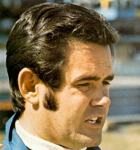 |
|
b. 1939
AI Unser began racing at the age of 18, racing Supermodified cars from 1957 to 1963. His business, however, was the running of a scrap yard which his father had purchased for him. In 1960 he ran at Pike's Peak for the first time, finishing second to Bobby. He was runner-up to his elder brother again in 1962, but in 1964 he broke the hill record and Bobby's run of six successive victories. More>> |
 |
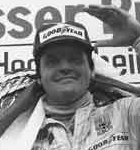 |
|
b. 1946
Born in Melbourne, Jones was the son of Stan Jones, an Australian racing driver and winner of the 1959 Australian Grand Prix. It was inevitable that Alan would want to follow in his fathers footsteps, and so the young Jones left for Europe in 1967 to make a name for himself - but success would not come easily. More>> |
 |
 |
|
(1891 - 1980)
Arguably the greatest, and in the annals of motor-sport history, undoubtedly the best known team manager in motor racing was Alfred Neubauer. His large figure, festooned with stop watches and holding a red and black flag, was a familiar sight at Grand Prix and sports-car races contested by Mercedes-Benz from 1926 to 1955. Many was the time Neubauer threw his hat under the front wheels of a winning car from his team. Neubauer also had a knack of spotting budding champion drivers. He offered Hermann Lang, a mechanic, the chance to race a Grand Prix car. Also, in the 1950s, when Mercedes-Benz returned triumphantly to Grand Prix racing for two years, he chose drivers of the calibre of Juan Manuel Fangio and Stirling Moss. More>> |
 |
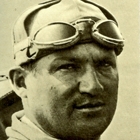 |
|
1888 - 1925 and 1918 - 1955
It is unusual for a father and son to follow the same path through life so closely as the Ascaris - Antonio and Alberto. Both were gripped by the excitement and joy of fast driving, both took up motor racing, both reached the peak of their profession, both died at the wheel at the age of 36 and, by an even crueller coincidence, both left a widow and two children. The thirty years that separated their respective careers showed living and motor racing in two very different phases of development. More>> |
 |
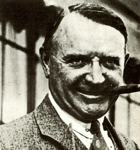 |
|
1878 - 1946
Berna Eli 'Barney' Oldfield was a showman, a rich showman. He specialised in short match races, chiefly on dirt-tracks, shortly after the turn of the 20th century, but he was also an accomplished road racer. Perhaps because of his showmanship on the dirt-tracks, his circuit achievements did not receive the recognition due. More>> |
 |
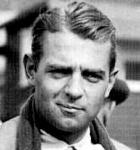 |
|
1909 - 1938
There are some tragically short stories of the world’s greatest drivers among those listed here on Unique Cars and Parts - although most at least drove more than the one car. But the only car Bernd Rosemeyer ever raced was the tricky 400 bhp rear-engined Auto-Union, yet in his meteoric three-year career, he established himself as the world's fastest road-racing driver. More>> |
 |
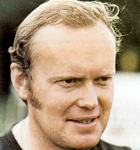 |
|
b. 1943
Bjorn Waldegard was born in Ro, Sweden, on 12 November 1943, the son of a farmer. In 1962 he began his motor sporting career, shooting to fame in T -races, miniature rallies with short but difficult special stages. At first he used his own car, a Volkswagen 1200, but such was his prowess Scania-Vabis, the Swedish Volkswagen importers, supplied the machinery. More>> |
 |
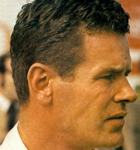 |
|
b. 1934
Al and Bobby Unser were both double Indianapolis winners. And both were winners at Pike's Peak hill-climb, a venue which was almost considered the property of two generations of the Unser family. Both tried road-racing in addition to their forte, the USAC National Championship trail. And both were deadly rivals. More>> |
 |
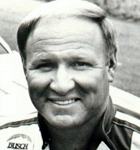 |
|
b. 1939
William Caleb ‘Cale’ Yarborough was born on 27 March 1939, in Timmonsville, North Carolina. At school he became a football fanatic, representing Timmonsville High School as an all-state fullback. Later he played semi-professional football with the Sumter Generals, nearly making the big time. Yarborough married Betty Jo, whom he had met at his uncle's drug store, and tried to support her, farming turkeys, and racing cars. He was not all that successful at either venture, although he just scraped along as a stock car exponent. As an eighteen-year-old he added three years to his age to be eligible for NASCAR racing. More>> |
 |
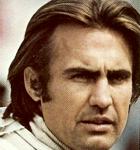 |
|
b. 1942
Carlos Reutemann was the first world-class racing driver from Argentina since the days of the legendary five-times World Champion Juan Manuel Fangio. He first made his mark at the top by winning Grands Prix in 1974, taking his works Brabham BT 44-Ford to victory in South Africa, Austria, and the United States. More>> |
 |
 |
|
1865 - 1913
CAMILLE JENATZY, BORN IN 1865, was a Belgian civil engineer turned motor manufacturer who made his competition debut in 1898 at the controls of one of his own electric vehicles, in the Chanteloup hill-climb organised by La Prance Automobile. Although heavy rain had affected the road surface, Jenatzy made the fastest time of the day, covering the 1800-metre course at an average speed of 17 mph. Three weeks after this, on 18th December, La Prance Automobile held a second speed trial, this time over a standing-start, two-kilometre course on a deserted stretch of level road at Acheres, to the west of Paris. More>> |
 |
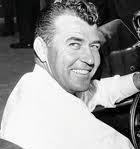 |
|
1923 - 2012
Carroll Hall Shelby was an American automotive designer, racing driver and entrepreneur. He was best known for his involvement with the AC Cobra and later the Mustang-based performance cars for Ford Motor Company known as Shelby Mustangs which he had done since 1965. His company, Shelby American Inc., founded in 1962, went on to create and sell modified Ford vehicles, as well as performance parts. More>> |
 |
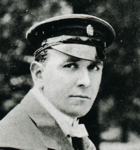 |
|
1877 - 1944
Finish At All Costs was the racing motto of Charles Jarrott, one of Britain's greatest drivers in the first decade of motor sport, who took part in just about every race that mattered, up to 1905. Yet, out of all those events, he had just one major victory, although he was often well up with the leaders Jarrott's creed, recalled Arthur Bray (one of his racing contemporaries), was that it was always better 'to race clean and lose, than to win by foul driving'. More>> |
 |
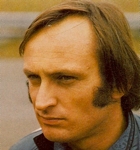 |
|
b. 1943
CHRIS AMON drove in his first international Formula One race in 1963 and tried for many seasons to notch his first elusive victory. Time and again he would prove to be the equal of his contemporaries, would set pole positions and lead Grands Prix. And every single time luck, fate, call it what you will, intervened. Amon had driven for many top teams - Ferrari, McLaren, Matra, March, Tyrrell and Ensign - but somehow had an uncanny knack of leaving them when things were just about to turn right. More>> |
 |
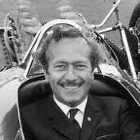 |
|
1928 - 1982
It could be argued that Colin Chapman did more to establish Britain as the home of international motor racing during the 1960's and 1970's than any other single person, with the possible exception of John Cooper, who got in first with the Cooper racing cars, but failed to keep pace with the astonishing versatility of the designs Colin Chapman produced for Lotus. More>> |
 |
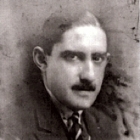 |
|
1895 - 1924
Count Louis Zborowski, whose father had been killed in a Mercedes 60 at the 1903 La Turbie Hill-climb, was half-Polish, half-American, and had been educated at Eton. His collaborator in the development of a giant racing car was Clive Gallop, who had been involved in the evolution of the 3-litre Bentley: in the work-shop at Higham they shoehorned a six-cylinder 300 bhp Maybach Zeppelin engine into an innocent 75 bhp Mercedes chassis of pre-war vintage. More>> |
 |
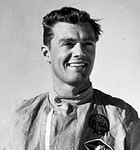 |
|
b. 1937
Craig Breedlove was one of a select band of Californian dragster fanatics whose sole hobby was attempting to go faster than the next man. He decided to build a car to crack the land-speed record but, lacking the enormous funds available to Donald Campbell, he designed a very simple car. More>> |
 |
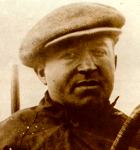 |
|
1882 - 1924
One of the most skilled and versatile racing drivers of his age, Italian-bern Dario 'Dolly' Resta was brought to London at the age of two in 1884. Resta went into the motor trade and eventually opened his own business in the West End of London as a naturalised citizen. He took part in the opening meeting at Brooklands on July 6, 1907, driving a 1906 Grand Prix Mercedes entered by the wealthy sportsman F. R. Fry. More>> |
 |
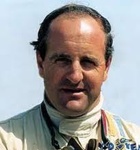 |
|
1936 - 1992
Denny Hulme was almost a has-been before he ever started seriously in Formula One racing. He began with an MG TF at club races in New Zealand driving in shorts and bare feet. When he arrived in England in 1960 as one of two "Drivers to Europe" that season, he was still racing his Formula Two Cooper in bare feet because he maintained he had a better feel of the accelerator. More>> |
 |
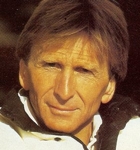 |
|
b. 1941
Derek Bell MBE, won the Le Mans 24-Hour race in June for the fifth time in 1987. This was an achievement exceeded by only one man, his former driving partner Jacky Ickx, who had six successes (three of them with Bell) and, at the age of 45, Bell was by far Britain's most successful sportscar driver. More>> |
 |
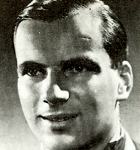 |
|
1913 - 1939
Dick Seaman's career as a professional racing driver in the 1930s was both short and meteoric. Born Richard John Beattie Seaman in 1913, he is still believed to be, at least by motoring historians, as Britain's best. And it all happened in just two-and-a-half seasons - before a tragic accident which claimed his life when he was only 26. At the time he was Britain's sole representative in Grand Prix racing. More>> |
 |
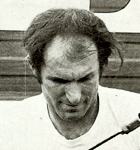 |
|
b. 1932
In his day, it could truthfully be said that Don Garlits released more horsepower onto tarmac than any other motor sportsman in history, yet he remained little known outside America. The sport in which he achieved equal measures of fame and fortune in the USA was drag racing, the supercharged standing-start sprint down a flat quarter-mile strip. More>> |
 |
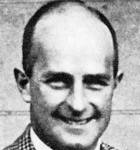 |
|
1898 - 1988
Donald Healey was around the motoring industry a long time and he sure accomplished a lot of things � so much so that no article here on Unique Cars and Parts could possibly do him justice. There were not too many front line Royal Flying Corps pilots, fewer still many pre-World War 2 winners of the Monte Carlo Rally. And there have never been many men who have given their names to a great line of sports cars. More>> |
 |
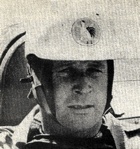 |
|
? - 1979
As a regular member of the Datsun Racing Team Doug Whiteford was a fixture in small capacity Datsuns, usually as partner to John Roxburgh. Undoubtedly he counts with Lex Davidson, Stan Jones and Len Lukey in the "Hall of Fame." His list of successes was a long one, but the measure of the contribution he made to Australian motor sport is unlikely ever to be assessed fully as it was so diverse. More>> |
 |
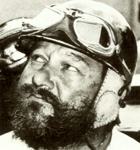 |
|
1920 - 1994
These days there can be little doubt that someone like Duncan Hamilton would be forced to live a very different life should they wish to participate in the elite races of motorsport. But back in the 1950s, racing was for professional and amateur alike, and Hamilton managed to be both successful on the track while enjoying a drink and chasing girls. And there is nothing wrong with that. More>> |
 |
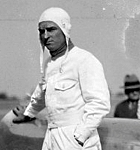 |
|
1886 - 1965
Although not as well known as drivers like Barney Oldfield, Ray Harroun and Ralph de Palma, Earl Cooper was one of the most successful racing drivers in the pioneer days of American motor racing. Early American professional motor racing was largely confined to track racing, either on small dirt or cinder ovals, or on the bigger half-mile board tracks or even bigger concrete bowls, of which Indianapolis was the first in the USA. More>> |
 |
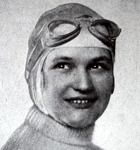 |
|
1990 - 1994
ONE OF THE GREAT Bugatti drivers - perhaps the greatest female driver of all time - was Elizabeth Junek from Czechoslovakia, who, in a few crowded seasons in the mid 1920s, showed that she had the ability to meet and beat the world's racing elite. Born in 1900, Junek first heard of the Bugatti in Paris, where, at the age of 21, she met her future husband, Cenek Junek, a Prague banker. That was shortly after Bugatti's famous victory in the Circuit di Brescia. More>> |
 |
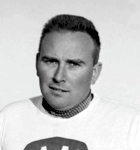 |
|
b. 1929
Born in 1929 at Trollhattan in Sweden, Carlsson's first love was motor cycling but, after his military service, he graduated to rallying with cars like an Austin A40 and a VW Beetle. In 1953, he took part in his first major event, the Swedish Rally, as co-driver in a Volvo. This whetted his appetite and, in 1954, he bought a Saab 92 for rallying. The Saab car factory had only been established since 1950, although the company had been building aircraft and other engineering products for many years. More>> |
 |
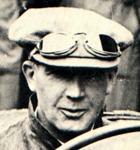 |
|
1881 - 1940
Felice Nazzaro reached the peak of his international fame over 100 years ago, in 1909. He was then 28 years old, and had been a racing driver for nine years. The son of a well-to-do coal merchant, Felice had been apprenticed to Ceirano, who were acquired by Fiat at the turn of the century; his abilities as a driver were soon realised by the new owners, and in 1900 he was entered in the Padua-Vicenza-Padua race with a 6 hp Fiat, and came second (his friend Vincenzo Lancia won the event, although one report claims that both men 'and a dozen other drivers' were disqualified for pushing their cars up one of the hills on the course). More>> |
 |
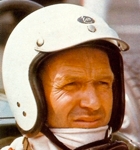 |
|
1931 - 2009
Few race drivers had a more memorable racing career than our own Frank Gardner, who took up motor racing in 1949. Gardner was born in Sydney, Australia on 1 October 1931; the son of a trawler skipper, so it was natural that his formative years should have been spent on or in the sea where he became an expert swimmer, oarsman, surfer, surf lifesaver and even a boxer. More>> |
 |
 |
|
b. 1942
Frank Williams started out in Formula One racing in 1969 and from late 1972 he was running his own cars. A Grand Prix victory eluded him for his first years, but with the advent of Saudia Williams F1 team in 1978, Frank Williams' star began to rise, and with Alan Jones behind the wheel many thought he would quickly enjoy success – however he would still have to wait until 1980. More>> |
 |
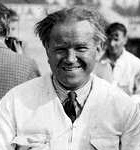 |
|
1892 - 1956
We list Fred Dixon here in the Legends of Motorsport section of Unique Cars and Parts but, if we also had a legends of motorcycle section, he could have equally been listed there too. For forty-six years Fred Dixon divided almost equally between the car and motorcycle fields, the deeds of this prankish genius was the stuff of lengend, and why a movie has not been created about his exploits seems a travesty. More>> |
 |
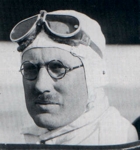 |
|
1897 - 1979
Eyston is probably best remembered today as a record breaker, and in this field he had some great successes, such as being the first driver to exceed 100 m.p.h., 100 in the hour, and 120 m.p.h. with a 750-c.c. car, the famous MO "Magic Midget", breaking the Land Speed Record three times, the World's hour record on four occasions, the 12-hour thrice, and the 24- and 48-hour records twice, as well as setting up some significant diesel records, the fastest at nearly 160 m.p.h. More>> |
 |
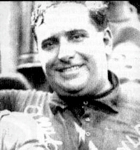 |
|
1892 - 1933
It's difficult to imagine anyone who looked less like a racing driver than Giuseppe Campari, a portly 16-stone lover of good food and grand opera, who was liable to burst into an aria from Rigoletto, in his fine baritone voice, whenever he felt elated. In fact Campari, born in 1892, was a natural. More>> |
 |
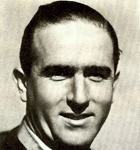 |
|
1906 - 1966
Giuseppe Farina was the first official World Champion, gaining the title in 1950. Also Italian Champion in 1937, 1938 and 1939, he is best known as the driver who set the style of modern race-driving style: Farina's trademark was to control his machines with arms outstretched and head held back. Ironically enough, although he gave an impression of smoothness and precision, during his thirty-year racing career he suffered a series of accidents. Burns, fractures, cuts and abrasions were part and parcel of the life of Giuseppe ('Nino') Farina. More>> |
 |
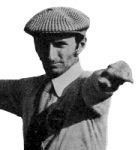 |
|
b. 1934
Amoung the 2010 Australia Day awards was Glen Dix, the rather flamboyant race track virtuoso better known these days for his waving of the chequered flag at the Australian Formula 1 Grand Prix in Adelaide during the 11 years the event was held in the City of Churches, from 1985 until 1995, and then the first year after the event moved to Melbourne in 1996. He also waved the flag at four Australian 500cc Motorcycle Grands Prix. More>> |
 |
 |
|
1929 - 1975
Graham Hill was Born on 15 February 1929, and christened Norman Graham Hill. He was the son of a wealthy stockbroker who was not interested in the car or in driving, so the motor car did not play any significant part in Graham Hill's development. Like so many other top racing drivers Hill's schooling, undertaken mostly at Hendon Technical College, was borne grudgingly, but he took refuge in sport by playing football and cricket and becoming a very competent oarsman with the London Rowing Club. More>> |
 |
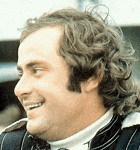 |
|
1948 - 1978
Gunnar Nilsson was the second son of a building contractor and was born in Helsingborg, Sweden, on 20 November 1948. He went to school in his home town and subsequently served as a submarine radio officer in the Swedish Navy. For a while it seemed that he would follow the family business. He studied engineering for four years and gained a degree from the University of Stockholm but eight months of working as a supervisor in the construction industry was as much as he could tolerate. He left his job in Stockholm to return home and start his own business. More>> |
 |
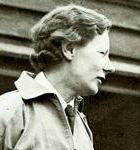 |
|
1894 - 1990
There were only a handful of female drivers able to compete in terms of sheer speed with the racing motorists of the inter-war period - although this is no reflection of ability, but a result of little opportunity. One to break the mould, so to speak, was Gwenda Hawkes. Hawkes father was Sir Frederick Manley Glubb CB, KCMG, DSO, who served during the Boer War and World War 1, while her brother John was Glubb Pasha of the Arab Legion. Gwenda herself had a war record of some note, having driven ambulances on the Russian and Rumanian fronts between 1914 and 1918. More>> |
 |
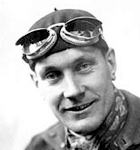 |
|
1900 - 1978
Hans Stuck was known as the 'King of the Mountains'. His forte was hill-climbing-or mountain races - but he was also an accomplished Grand Prix driver and record breaker. He competed until the early 1960s, collecting trophies and championships before finally retiring from motor sport to coach his son Hans-Joachim, who by the 1970s was one of Germany's leading racing drivers. More>> |
 |
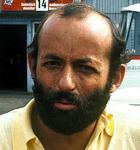 |
|
b. 1942
Henri Pescarolo, the sone of a top French surgeon, was born in Montfermeil on 25 September 1942. The serious-looking, bearded medical student was, however, not destined to follow his father's footsteps. Motor sport appealed to him and, after navigating for his father in a doctors' rally in 1964, the following year found him at a racing drivers' school and competing in a Ford-backed series of races for novices in Lotus 7 sports cars. More>> |
 |
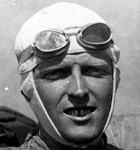 |
|
1896 - 1929
To many, Sir Henry Segrave epitomised all that was best in the British character. Segrave was in fact born in Baltimore, Maryland, of an Irish father and an American mother, in 1896, and only educated in England. The name "Segrave" dated back to the Vikings, and meant "Lord of the Sea". Segrave's interest in motor racing apparently dated from a wartime visit to the Sheepshead Bay track on Long Island; his first experience with fast motor cars was gained in America with Marmon, Packard and Stutz cars. Returning to England, he did war service with the Royal Flying Corps, using a 120 hp Itala racer. More>> |
 |
 |
|
1940 - 2003
Long before Liverpool (Great Britain) was famous for the Beatles, Liverpool (New South Wales) was known, in the motor racing world, to be the home of the Geoghegans. In the mid 1960s the two Geoghegan brothers, Leo and Ian, were members of the TOTAL Racing Team and the pair cut a swathe of successes through the intensively competitive sport of motor racing, and set lap records on every major circuit in Australia. More>> |
 |
 |
|
1930 - 1993
Innes Ireland was one of the last great characters of motor racing, after he gave up racing in 1966 the amount of sponsorship money hanging on race results precluded any of the all-night pre-race parties and escapades in which Ireland often indulged. Although he was a professional racing driver, his approach was that of a gentleman amateur to whom the sport was simply a well paid means of assisting him to enjoy life. Born Robert McGregor Innes Ireland at Kirkcudbright, Scotland, in 1930, he was the son of a veterinary surgeon who attempted to give him a good education. More>> |
 |
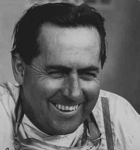 |
|
b. 1926
Sir John Arthur "Jack" Brabham, AO, OBE (born April 2, 1926) is Australia's best known and most successful race export, and remains the only Australian driver to take out three Formula One championships, in 1959, 1960 and 1966. He was a founder of the Brabham racing team and race car constructor that bore his name. More>> |
 |
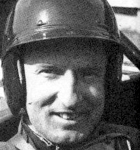 |
|
b. 1930
Jack Sears racing career started in 1949 and terminated, after a rather unpleasant testing accident, at the end of 1965. Immediately immersing himself in the administrative side of motor racing, Sears became a member of both the Race and Competitions Committees of the RAC as well as sitting on the Council of the BRDC and taking an active interest in the commercial side of Silverstone circuit's operation as a director. More>> |
 |
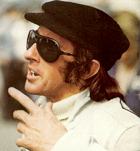 |
|
b. 1939
Born on the 11th June 1939, John Young Stewart - always known as Jackie - was the son of a garage proprietor, Robert Stewart, who once raced motor cycles as an amateur. The boy was introduced to motor racing by his brother Jimmy, eight years his senior, who was an accomplished sports car driver. Jimmy raced for the Ecurie Ecosse Jaguar team and the works Aston Martin team until a serious crash at Le Mans in 1954 ended a promising career. That same year 15-year-old Jackie left Dumbarton Academy. More>> |
 |
 |
|
1947 - 1993
By the mid 1970s James Hunt was very much public property. He had battled his way up through a string of accidents in Formula Three to become Grand Prix chauffeur for the rich young Lord Hesketh who was regarded as something of a joke until Hunt started winning races for him. But during the 1975 F1 Season the champagne dried up first and then the money. By the end of the year Hesketh announced he couldn't afford to continue and Hunt was stranded without a drive at a time when all the major teams had settled their drivers months earlier. More>> |
 |
 |
|
1921 - 1959
Behra, born in Nice in 1921, soon fell for the lure of speed on wheels: first he took up cycling, then motorcycling, his prowess on two wheels earning him the French motor-cycle-racing championship, three years in succession. Like so many motor-cycle racers before and since (including Tazio Nuvolari, Piero Taruffi, Jean-Pierre Beltoise, John Surtees and Mike Hailwood), Behra hankered after four-wheel racing and, as soon as organised motor racing began in Europe, following World War 2, he was at the wheel of a Talbot which he drove to sixth place in the Coupe du Salon meeting at Montlhery, near Paris in 1949. More>> |
 |
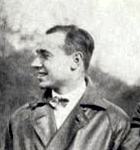 |
|
1899 - 1992
Gregoire started out racing an Amilcar and a Bugatti for fun; he also met Pierre Fenaille, a wealthy amateur engineer who was to have a great influence on Gregoire's subsequent career. Fenaille suggested that Gregoire should join him in the construction of a light sports/racing car with the then-revolutionary feature of front-wheel drive. It was to be called the Tracta, from the French words traction avant - ' front-wheel drive'. The prototype, nicknamed 'Gephi', after the phonetic sound of the initials of Gregoire and Fenaille, was built in the works of Langlois & Journod of Courbevoie, Seine, and first ran in the summer of 1926. More>> |
 |
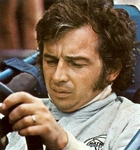 |
|
1936 - 1968
Sometimes words alone are not enough to describe the brilliance and talent of a man or woman. Such is the case with Jim Clark, who's life was cut tragically short on the 7th April, 1968 in a Formula Two race at Hockenheimring in Germany. What made it even more difficult for race fans to accept was that Clark should have been driving in the BOAC 1000 sportscar race at Brands Hatch, but had to switch to the Formula 2 event due to contractural obligations with Firestone. More>> |
 |
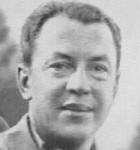 |
|
1908 - 1949
Jean-Pierre Wimille, son of a journalist, was born in Paris on 26 February 1908. He began his career at 22 as a racing driver by entering a Bugatti in the 1930 French Grand Prix at Pau. Early in 1931 he competed with a Lorraine in the Monte Carlo Rally and finished second. Soon he became a regular at the racing tracks. More>> |
 |
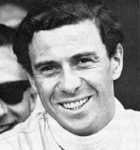 |
|
1936 - 1968
Sometimes words alone are not enough to describe the brilliance and talent of a man or woman. Such is the case with Jim Clark, who's life was cut tragically short on the 7th April, 1968 in a Formula Two race at Hockenheimring in Germany. What made it even more difficult for race fans to accept was that Clark should have been driving in the BOAC 1000 sportscar race at Brands Hatch, but had to switch to the Formula 2 event due to contractural obligations with Firestone. More>> |
 |
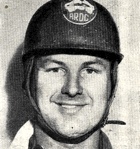 |
|
1929 - 1957
Jim Johnsons first victory came early in 1953. Many others followed, in N.S.W. and in Queensland, the most important ones being the South Pacific Championship for sports, cars under 1500 c.c. (Orange, January 1956), the N.S.W. Hillclimb Championship for sports cars (Newcastle, August 1956), and the handicap section of the Bathurst 100-miler, Easter 1956. At Newcastle Jimmy's car became the first MG to break the minute for the tough hillclimb - his time was 59.4 seconds. More>> |
 |
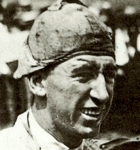 |
|
1894 - 1924
Jimmy Murphy was a hero in American motor racing during the early 1920's - the 'Golden Age' of the sport in the United States. He was twice US champion, he won the most famous race of all, the Indianapolis 500 miles, and he became the first American driver to win a European Grand Prix. Murphy's race-driving career spanned only five seasons before he was fatally injured in a crash, yet this was sufficient enough for him to become a legend. A dance was named after him, the Jimmy Murphy Fox Trot. More>> |
 |
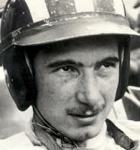 |
|
1936 - 1971
While few would dispute that Jo Siffert was one of the fastest Formula One drivers of his time, it was in the exacting and exhausting field of endurance sports-car racing that he excelled. Siffert was born in Fribourg, Switzerland, on 7 July 1936. He started racing motor cycles in 1957 and by 1959 was the Swiss 350cc champion. Shortly afterwards he switched to four wheels using a Formula Junior Stanguellini. In 1961, he exchanged this machine for a Lotus 22 and soon began to make his mark on the European circuits. At the end of the year he was declared joint European Formula Junior champion with Trevor Taylor and Tony Maggs. More>> |
 |
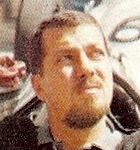 |
|
1930 - 1972
Bonnier was one of the first Swedes to tackle motor racing seriously in the post-war years and led the way for other Swedish drivers like Ronnie Peterson and Reine Wisell. Bonnier was born in Stockholm in 1930, the son of a professor who ensured that his son had an international education in Paris and Oxford before taking up employment with his uncle's publishing business. More>> |
 |
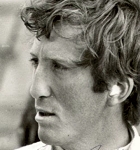 |
|
1942 - 1970
Despite being very successful in Formula 2 (by winning for instance the 1964 London Trophy), Rindt kept on choosing the wrong F1 cars. Rindt made his Formula One debut for Rob Walker Racing Team in the 1964 Austrian Grand Prix. It was to be his only Grand Prix of the year. From 1965 to 1967, Rindt raced for Cooper Car Company, scoring 32 points in 29 races. More>> |
 |
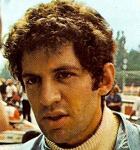 |
|
b. 1950
To say Jody Scheckter caught the Formula One aficionados by surprise would be a huge understatement. When he burst onto the F1 scene he was virtually unknown, inexperienced and very young. Still, the hugely talented South African managed to rise from anonimity to a Formula One debut in a mere twenty months! More>> |
 |
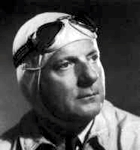 |
|
1899 - 1952
John Rhodes Cobb (December 2, 1899 - September 29, 1952) was a British racing motorist. He made money as a director of fur brokers Anning, Chadwick and Kiver and could afford to specialise in large capacity motor racing. He was born and lived in Esher, Surrey, near the Brooklands race track. Cobb's rise to fame was meteoric, and soon it was said: 'For handling really huge and difficult cars, he is already on a par with Parry Thomas, and there is every reason to suppose he will go further, for his time seems only just begun'. More>> |
 |
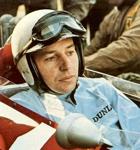 |
|
b. 1934
Italians have always been parochial when it comes to supporting their local race heroes, but one of the more notable exceptions to the rule was 'Big John' Surtees, who had earned their respect by bringing honour to Italy as he won honours for himself, leading the works team of MV Agusta motor-cycles: the famous four-cylinder 'fire engines' from Gallarate. More>> |
 |
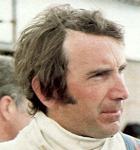 |
|
b. 1946
John Watson was Irish, but it seemed ‘the luck of the Irish’ alluded him for much of his early Grand Prix career. Watson was born in Belfast on 4 May 1946. His father was a motor trader, himself a racing driver and winner of Ireland's first saloon car race. John often watched his father race and by the time he left school, to join the family garage business, racing was in his blood. More>> |
 |
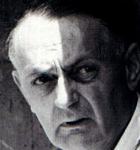 |
|
1909 - 1989
Word has it that, at the peak of his career, John Wyer wore dark glasses not to protect his eyes, but to protect his mechanics from the 'Deathray' - a title that would soon become his unofficial title. Wyer was no ordinary racing manager, but a specialist who became legendary in long-distance sports-car racing, where the disciplines and the difficulties demanded a more organised and rational approach than in any other kind of racing. More>> |
 |
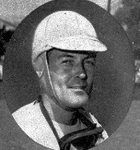 |
|
1918 - 1984
Born in 1918, Johnnie Parsons had a love of motorsport that saw him rise to the peak of success winning the Indy 500 in 1950. It was a fantastic victory, however it was somewhat overshadowed by the silversmiths making a rather glaring mistake, inscribing the name "Johnny" instead of "Johnnie" on the Borg-Warner trophy, and thereby giving Parsons the somewhat dubious distinction of being the only Indianapolis 500 winner to have his name misspelled. More>> |
 |
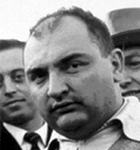 |
|
b. 1922
Jose Froilan Gonzales was one of the most popular and talented of the bunch of South American drivers who invaded the European motor-racing scene in the 1950s. He never matched the almost clinical tidiness of his countryman Juan Manuel Fangio, because his technique at the wheel of a racing car was to hurl it at every corner as fast as it would possibly go, sorting out the slides with lightning movements of his enormous arms. Like Fangio, Gonzalez, who was born in 1922, raced the primitive cars used in Argentinean road races, but these powerful old cars with poor roadholding helped him to achieve a great deal of skill in controlling slides on the dirt roads often used in local races. More>> |
 |
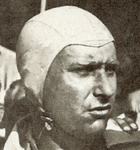 |
|
1911 - 1995
Who do you consider to be the world’s best ever driver? Ayrton Senna would obviously rate a mention, and here in Australia we can be rightly proud of our home grown heroes, such as Jack Brabham, Alan Jones, Peter Brock and Allan Moffat. But there is one man that, above all others, seems to be the one against which all others are judged. That man is Argentina's Juan Manuel Fangio, the five-times World Champion who did not make his bow in European Grand-Prix racing until he was 37, and who finally retired at the end of 1958 when he was 47. More>> |
 |
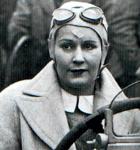 |
|
1903 - 1994
One of the most glamorous pioneering race drivers of all time was Mrs Kay Petre, whose petite appearance concealed a steely determination to win, and which made her one of the outstanding racing drivers on the British scene in the 1930s. Kay Petre started racing with sports cars, and during 1935 was one of an all-girl team at Brooklands, along with Aileen Ellison and Mrs Tolhurst. More>> |
 |
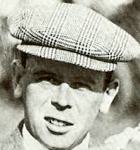 |
|
1887 - 1937
Kenelm Lee Guinness was a driver who seldom made the headlines, but always did a job well. That was only part of the story, however, as this modest, retiring man, who drove unspectacularly, but could always be relied upon to finish well. He had received his baptism of fire - literally - as riding mechanic to his elder brother Algy (Sir Algernon Lee 'Bart' Guinness) in the notorious V8 200 bhp Darracq, whose 22.5-litre engine boasted only the most minimal of exhaust stubs, and which threw great spurts of flame back over the occupants of the car's two tiny bucket seats causing many anxious, and probably heated, moments. More>> |
 |
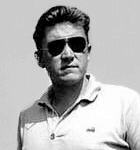 |
|
1936- 1972
Lance Reventlow was the son of Woolworth heiress Barbara Hutton and her second husband Count Curt von Haugwitz-Hardenberg-Reventlow and also the stepson of actor Cary Grant and Prince Igor Troubetzkoy. He was one of the Americans who developed a new enthusiasm for European-style motoring sport in the 1950s. This led him to go racing in Europe in 1957, and subsequently he decided to build an American competition car, and therefore formed the new company. More>> |
 |
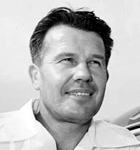 |
|
1914 - 2000
By 1975 only one man had beaten Petty's NASCAR record, and that was his son. As the influence of NASCAR spread, so those first stock-car drivers had to travel further and further afield in the search for prize money. Lee Petty, along with other famous drivers like Fireball Roberts, Curtis Turner, Joe Weatherly and so on, would drive overnight from one meeting to the next, trailing their race cars behind their trucks and having only their wives for company. The sport was strongest by far in the Southem states, and this is where the majority of top drivers have come from over the years. More>> |
 |
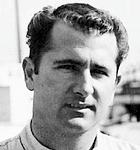 |
|
1938 - 1984
Lee Roy Yarbrough decided when he was a small boy in Jacksonville, Florida, that one day he would race cars. At fourteen in 1952 he lied about his age to obtain a licence and left school to race self-built machines on dirt tracks. It was obvious from his successes there that he would graduate to become one of the United States' top motor sportsmen. More>> |
 |
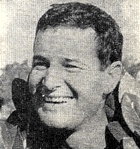 |
|
b.
Unlike his brother Ian, Leo spent much of his racing career in open wheel racing cars and sports racing cars. In addition to being a multi-Australian championship winning driver, Geoghegan has the rare distinction for an Australian of having won an international grand prix, specifically the 1969 Grand Prix of Japan. He was also the principal driver for Chrysler Australia during the period ( 1970– 1972) when the company supported Valiant Pacer and Valiant Charger Series Production touring car teams. More>> |
 |
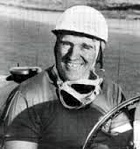 |
|
1923 - 1965
Born on the 12th February, 1923, Alexander Nicholas "Lex" Davison would go on to become a leading race driver, winning the Australian Grand Prix four times between 1954 and 1961 , along with the Australian Drivers' Championship in 1957. He drove HWM-Jaguar, Ferrari, Aston Martin and Cooper-Climax grand prix cars. Davison won Class A of the 1960 Armstrong 500 forerunner of the Bathurst 1000. In 1961 he won the Aintree Grand Prix, finished third in the British Empire Trophy and placed tenth in the Intercontinental Championship - his only point being a sixth in the Guards Trophy, all whilst racing an Aston Martin. More>> |
 |
 |
|
b. 1950
Although amateur racing teams were the rule rather than the exception in the earlier part of the twentieth century, most people thought that these were extinct, as far as competitive Grand Prix racing was concerned, by the 1970s. Any supposedly amateur outfit could not exist for long without massive sponsorship from, in most cases, one of the big tobacco companies; and even with this support, success was hard to come by. This was all thrown to the wind when the Hesketh team arrived on the Formula One scene in 1973 and, amid laughter and ridicule fsom rivals, began to pick up good places in their rented March 731. More>> |
 |
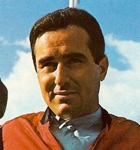 |
|
1935- 1967
Enzo Ferrari tended to pair a very fast foreign driver with an Italian driver in his Formula One team, with the result that the Italian driver often drove too fast for his ability. Drivers like Luigi Musso, Eugenio Castellotti and Lodovicco Scarfiotti lived and died in the shadows of team mates like Juan Manuel Fangio, Mike Hawthorn, and Chris Amon, while Bandini invariably had to play second fiddle to Phil Hill and John Surtees in the Ferrari team. Despite this emotional and psychological handicap, Lorenzo Bandini captured the imagination of the Italian public as well as the Press. Darkly handsome in the typical Latin manner, he behaved the way Italians felt their motor racing heroes should behave. More>> |
 |
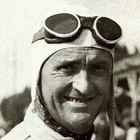 |
|
1899 - 1979
Chiron was born in 1899 and, like so many of his generation, gained his first experience of motoring during World War 1. Even at that age he must have been an outstanding driver, for it is recorded that in 1919 he was chauffeur to the great Marechal Foch himself. The young Monegasque spent his early career working in the Hotel de Paris in Monte Carlo, and his love for motor racing was nurtured in this sybaritic atmosphere. He first appeared in competition in 1923 at the wheel of a Brescia Bugatti. He enjoyed little success until 1927, when he bought the first supercharged 2.3-litre type 35B Bugatti to be produced. More>> |
 |
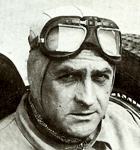 |
|
1905 - 1956
Born in 1905, Louis Rosier, a garagiste from Clermont-Ferrand in the Auvergne, had driven a blown SCAP 1100 cc sports car in local hill-climbs since 1928, graduating to one of the new Talbots of the Lago regime in 1938, which he campaigned further afield, including Le Mans - though without success. His first major victory came in 1947, in the Albi Grand Prix, with his old 4-litre 'streamlined, pseudo-racing' Talbot, with which he had taken seventh place at Spa a fortnight before and sixth place at Reims a week after that. More>> |
 |
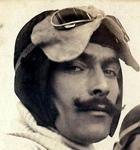 |
|
1882 - 1960
Louis Wagner, born in Paris in 1882, was one of the most famous drivers of the 'heroic age' of motor racing. Wagner joined the racing department of Darracq at Suresnes in 1901, and became a team driver in 1903. Alexandre Darracq believed in entering his racing cars in as many speed events as possible, and throughout the 1903 season, Wagner was fully occupied with races, hill-climbs and sprints. More>> |
 |
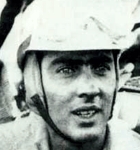 |
|
1924 - 1958
Luigi Musso was a deeply religious man, who in his youth excelled at shooting, fencing and horse riding, knew he had the honour of Italy at stake, but it was a terrible burden to bear. On 6 July 1958, he crashed fatally in the French Grand Prix at Rheims. He had been following his Ferrari teammate Mike Hawthorn round the difficult corner after the pits at a speed in excess of 130 mph, when he lost control and crashed. Musso was born in Rome on 27 July 1924, the youngest of three brothers . More>> |
 |
 |
|
1909 - 1997
Luigi Villoresi was born in Milan on 16 May 1909, and began racing in 1931 at the same time as his elder brother Emilio. In the 1935 Coppa Ciano voiturette event at Montenero his modified Fiat sports car was third, and the following year he was third again in the same event driving a Maserati. He showed his versatility in 1936 as a class winner in the Monte Carlo Rally. More>> |
 |
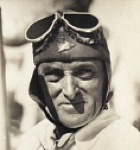 |
|
1885 - 1948
Campbell had already tried his hand, at Brooklands in 1908, with a Paris-Madrid Renault, but without result. His new car, a 34 hp Darracq nicknamed ' The Flapper', was more competitive, however, and, in 1910, he won his first race with it, lapping at around 75mph. After owning a Peugeot ('which brought me no luck') and a 1906 Darracq, more powerful than 'The Flapper' ('which led me into every kind of trouble'), Campbell acquired a 59.6hp Vanderbilt Cup Darracq, which became the first Bluebird. More>> |
 |
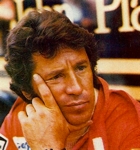 |
|
b. 1940
Andretti scored victories in almost every branch of the sport, from saloon racing to Indianapolis and from sports cars to Formula One. He raced anything and everything - ' because I don't know how to do anything in life apart from race cars'. By any standards, Andretti's career was spectacular. His ambitions were in Grand Prix racing and the World Championship. During the long haul towards breaking into the European-dominated 'circus', he was three-times United States Automobile Club Champion and, in 1969, he realised the great American dream, winning at Indianapolis. More>> |
 |
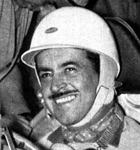 |
|
1917 - 2005
Maurice Trintignant, born on 30 October 1917, was the son of a farmer and the youngest of four brothers, Raoul, Rene, Louis and Henri. In 1938, after his brother Louis was killed, Maurice purchased the very Bugatti T51 in which his brother had been killed and entered his first race, the round-the-houses Pau Grand Prix. Racing against tough opposition he was fifth. He won his second race, the Grand Prix des Frontieres at Chimay, and repeated this victory in 1939. But for the outbreak of war he would have joined the famous Ecurie Bleue to race Delahayes and Maseratis. More>> |
 |
 |
|
1940 - 1981
Mike Hailwood retired with 76 Grand Prix victories, 14 Isle of Man TT wins and 9 World Championships. He was awarded the Segrave Trophy in 1979. The FIM named him a Grand Prix "Legend" in 2000. He was inducted into the AMA Motorcycle Hall of Fame in 2000 and the International Motorsports Hall of Fame in 2001. But, here at Unique Cars and Parts, we believe Mike Hailwood is best remembered for the bravery displayed when he pulled Clay Reggazoni from his blazing car in South Africa in 1973, a feat for which he earned the George Medal. Mike Hailwood - proof that the good really do die young. More>> |
 |
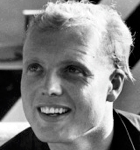 |
|
1929 - 1958
Mike Hawthorn was not a clinical driver in the Fangio and Moss mould, arguably a little inconsistent, but when he was on song he was almost unbeatable. John Michael Hawthorn was born on 10 April 1929 at Mexborough, Yorkshire (UK), but in 1931 his father Leslie Hawthorn went into partnership in a garage business at Farnham, in Surrey. Hawthorn senior was a keen racing motor cyclist and the major reason for the move was to be near the Brooklands track at Weybridge. More>> |
 |
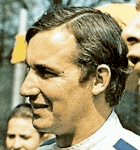 |
|
1931 - 1977
Michael Johnson Parkes was born in Richmond, Surrey, on 24 September 1931. His father, John Joseph Parkes, once a test pilot, moved to the midlands in the mid 1940s and was to become chairman and managing director of Alvis. Educated at Haileybury (where Stirling Moss was a fellow pupil), Mike joined the Rootes Group as an apprentice in 1949. He worked for 18 months as a fitter and a further 18 months inthe administration department before joining the experimental section, where he was closely concerned with the development of the Hillman Imp between 1956 and 1963. More>> |
 |
 |
|
b. 1949
Niki Lauda started his racing carrer by pawning his life for $69,000, the money enabling him to buy his way into Formula Andreas Nikolaus "Niki" Lauda was born on February 22, 1949 in Vienna, and would establish during his lifetime a reputation as both aviator, entrepreneur and Formula One racing driver, racking up three F1 World Championships. He founded and ran two airlines and was manager of the Jaguar Formula One racing team for two years. More>> |
 |
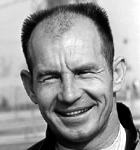 |
|
b. 1933
In the rough and tumble world of American stock car and Indianapolis-style racing, Parnelli Jones was one of the most outstanding performers, winning many races and being involved in many controversies. Born Rufus Parnell Jones, on 12 August 1933, the young Californian soon gravitated towards racing cars; at the age of nineteen he took part in his first race, a stock car event in Los Angeles. More>> |
 |
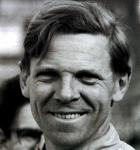 |
|
1917 - 2008
Life is all about "the dash" - the period between the year of your birth and the final curtain. Paul Frère certainly had a long dash, and achieved so much during his life. Brilliant as a race driver, engineer and journalist, he was one of the most widely respected drivers of all time. Having lived to the age of 91, most would assume Frere passed quietly at home - they would be wrong. Only weeks before his 91st birthday in January 2007, Frère was badly injured in an accident near the Nurburgring, and was hospitalized for 14 days in intensive care. He died on 23 February 2008 in Saint-Paul-de-Vence (France). Turn 15 at the Circuit de Spa-Francorchamps, formerly the first part of the Stavelot corner, has been renamed in his honour. More>> |
 |
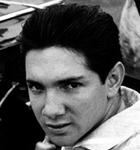 |
|
1940 - 1971
The Mexican brothers Pedro and Ricardo Rodriguez were encouraged from an early age by their rich father, and were winning motor races when their contemporaries were still worrying about school examinations. Both became national heroes in Mexico. Both were killed in horrific racing accidents, the hot-headed Ricardo at the age of 20 and Pedro, who had matured into a top-flight Formula One and sports-car driver, when he was 31. More>> |
 |
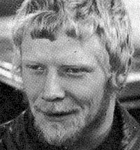 |
|
b. 1950
It was during the 1970's that there was a regular anomaly on the rally leader boards, that being the sight of a big, heavy, unwieldy Volvo 142, thanks to the incredible skills of the elfin, blonde-headed Swede, Per-Inge Walfridsson. Almost inevitably sideways through the forests, undeterred by snow, ice or loose stones, Walfridsson swung the big Volvos around from seat and pedals elevated to suit his 5 ft. frame. More>> |
 |
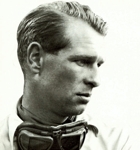 |
|
1931 - 1958
Peter Collins was born at Kidderminster in 1931, the son of a garage proprietor, so it was inevitable that he should graduate to four wheels very early in life. In fact, at the tender age of 17, he was behind the wheel of a Cooper-Norton 500, the car that, in the pre war years, started many young men on their motor-racing careers. He soon showed the natural talent that all top drivers of the time seemed to possess and he began winning almost immediately. He spent three years in the cut and thrust of Formula 500 racing, a good deal of it on the Continent where he gained valuable experience. More>> |
 |
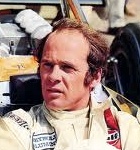 |
|
1940 - 2011
Peter Gethin participated in 31 World Championship Formula One Grands Prix, debuting on 21 June 1970. He won the 1971 Italian Grand Prix in the fastest average speed in Formula One history (until the record was broken by Michael Schumacher in the same race in 2003), but this was his only podium finish. There was only 0.01 seconds between him and second placed Ronnie Peterson, also a record). Indeed, he never led an entire lap of Formula One racing,[citation needed] as he passed from fourth to first in the last lap. He also participated in numerous non-Championship Formula One races. More>> |
 |
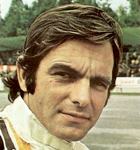 |
|
1939 - 1974
As Teddy Mayer once reflected, 'It's stupid really. The man gained more publicity over his romance with Marjie Wallace, the reigning Miss World, than he ever did for all his racing achievements.' That perhaps was a sad comment on just how big a handicap Peter Revson's name and family background really did represent. More>> |
 |
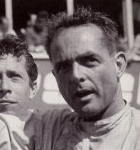 |
|
1927 - 2008
Phill Hill was one of Maranello's great exponents of the late 1950s and early 1960s and was America's first World Champion driver. He was primarily an enthusiast of motor cars and motor racing, this fundamental enthusiasm being responsible for leading him into the sport as a competitor. Throughout his life, and even after retiring from competitive motor racing, Phil Hill's enthusiasm remained untarnished. In 1974 he visited the French Grand Prix so that he could take part in the "restrospective parade" of former participants in historic motor racing as well as meeting old friends and colleagues of his era. More>> |
 |
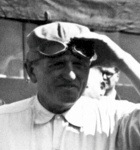 |
|
1896 - 1981
Philippe Etancelin, or 'Phi Phi' as he was nicknamed, was one of the few drivers who raced in the top flight of motor racing both before and after World War 2 and, although he was a successful driver, his main claim to fame among racing enthusiasts was his curious habit of wearing a cloth cap back to front when racing. This was quite common in the early days of racing but he persevered with the cap even when crash helmets were compulsory - he simply wore it over the crash helmet! Born in 1896 in Rouen, Etancelin began his motor-racing career in 1926 with a Bugatti, taking part in local hill climbs and other small events. More>> |
 |
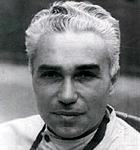 |
|
1906 - 1988
An engineer, a racing driver, a motor-cycle racer, a record-breaker and a team manager, Piero Taruffi enjoyed a long and involved career participating in motor-sport, stopping only when he had satisfied his greatest ambition: to win the Mille Miglia. This was in 1957, when he was fifty, 27 years after his first attempt at this classic Italian road race. He was known as the Silver Fox because of his grey hair. More>> |
 |
 |
|
1942 - 1970
Piers Courage was born on 27 May 1942, the first son of the Chairman of Courage breweries and therefore destined to inherit the vast fortune of the brewery family. However, like so many sons of wealthy fathers, he turned his back on the family business and began to make his own way in the precarious world of motor racing, with very little assistance from the family. His upbringing was conventional for someone from his background; after preparatory schooling at Seaford, he went to Eton. This is an establishment he hated, partly because he was not a great scholar and partly because he disliked most games intensely, especially football and cricket. More>> |
 |
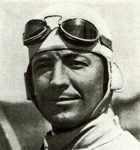 |
|
1890 - 1928
Pietro Bordino was arguably the finest road-racing driver of his generation, was born in Italy in 1890. In 1904, he was acting as riding mechanic in Fiat racers, accompanying Felice Nazzaro, Vincente Lancia and Ralph DePalma. By 1908 he had become a competition driver himself, making his debut at the Chateau- Thierry hill-climb. In 1911 he went to England with the giant four-cylinder, 28-litre, 300 bhp Fiat racer, which made a number of high-speed runs at Brooklands. His career did not start in earnest, however, until 1921, when his twin-ohc Fiat took the lead at the start
of the 1921 Brescia Grand Prix and kept it until the fourteenth lap. More>> |
 |
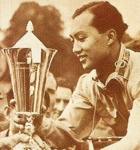 |
|
1914 - 1985
Birabongse, the second oldest (he was born in 1914), had been crazy about cars ever since, as a little boy, he had sat on the lap of a chauffeur and steered one of the royal cars. He didn't get the chance to drive on the roads, however, until he was sixteen at Eton; his elder cousin and guardian, Chula, allowed Bira, as he was known, to drive his 1928, 12 hp, sleeve-valve Voisin - 'a wonderful little machine'. More>> |
 |
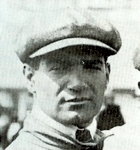 |
|
1882 - 1956
Considered by many automotive historians as the greatest racing driver the United States has ever known, Ralph de Palma was one of the most successful. Over a 27-year period, he participated in approximately 2800 speed events and won over 2500 of them. Above all else, he was a pleasant, friendly man, always willing to offer advice and assistance, even to rival teams. A true sportsman, he accepted defeat with grace. More>> |
 |
 |
|
b. 1938
Outside the close knit world of international rallying the name of Rauno Aaltonen may mean little, but Aaltonen, born 7 January 1938, at Turku, Finland, was once regarded as an institution in fast driving. One of the first of the famous 'Flying Finns', he started rallying as far back as 1956, and even after retirement he was rated as one of the leading exponents of his particuiar art. More>> |
 |
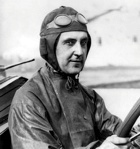 |
|
1879 - 1968
Ray Harroun won the very first Indianapolis 500 miles race in 1911, and he also gets the gong for being the first person ever to fit a rear-view mirror to a car. Even Harroun, who was born in 1879, was quick to deny the statement: 'Hell, no. We had them on horsedrawn carriages,' he would growl 50 years later. But what is true is the fact that Harroun was the first man to use a rear-view mirror as a substitute for the riding mechanic who was employed on early racing cars as much to keep a look-out for following cars. More>> |
 |
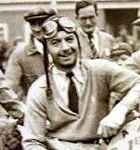 |
|
1899 - 1980
Raymond Mays was one of the most prominent British racing drivers of the between-war years. However, not only did he race cars successfully, he also developed the ERA during the 1930s and, after World War 2, was responsible for instigating the BRM project. Born in 1899 at Bourne, Lincolnshire, Raymond Mays 'was the son of a pioneer motorist who used to enter his Napiers and Vauxhalls in early speed events. The young Mays became infatuated with the motor car, and schooling at Oundle and Cambridge was impatiently suffered while schemes were laid to get into motor racing. More>> |
 |
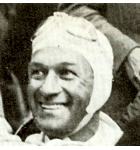 |
|
1906 - 1950
Raymond Sommer was the son of Roger Sommer, a wealthy manufacturer of felt, who from 1909 to 1912 had been one of France's best-known pioneer aviators and manufacturers of aircraft, but had sold his aviation business to MM Bathiat and Sanchez-Besa in 1913 and returned from aviation to the less exciting but more remunerative business of making felt slippers. Thus young Raymond, born in 1906, was brought up in an atmosphere of 'mechanical sport and progress'; he first started motor racing with a 4.6-litre Chrysler straight-eight, which had a carburettor for each cylinder, and, though he retired at Le Mans in 1931, he and his co-driver Delemer won the sports car class in the Belgian 24 hours'race at Spa. More>> |
 |
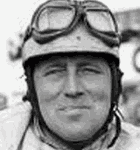 |
|
1911 - 1964
Although he was not all that well known here in Australia, Reg Parnell was one of the best GP drivers in the post war GP era. He began as a wild, seemingly reckless driver in the mid 1930s, but after World War 2 his style had matured. Parnell raced successfully into the mid 1950s and then became a team manager. His vast experience and knack of spotting up-and-coming drivers paid dividends and 'Uncle Reg', as he was affectionately known, was sorely missed when he died in January 1964. More>> |
 |
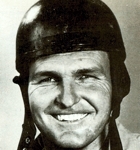 |
|
1939 - 1998
Rex Mays was one of the best known American drivers never to have won the Indianapolis 500 mile race, despite twelve attempts to do so. It could even be argued that he became better known to European racing enthusiasts because he also took part in road races on America's East Coast, instead of sticking almost exclusively to the dirt tracks and paved ovals of the West as did most of his colleagues. More>> |
 |
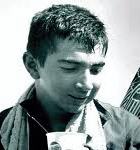 |
|
1942 - 1962
Both the Rodriguez brothers, Pedro and Ricardo, entered the Mexican Grand Prix, the first Formula One race in that country. Ricardo, in the absence of Ferrari, agreed to drive Rob Walker's Lotus 24-Climax. He died during the first day of practice, when he inexplicably failed to brake for the fearsome Peraltada corner, and entered the banked turn far too fast, hitting the barriers at the exit. He was 20 years old and his death provoked national mourning in Mexico. More>> |
 |
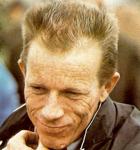 |
|
1930 - 1989
For many years during the late 1950s and early 1960s, America's Richie Ginther was one of the world's leading Grand Prix drivers, offering formidable opposition to the European aces. Ginther, Phil Hill and Dan Gurney showed the world that the USA could produce racing drivers of the highest calibre. Born in Los Angeles in 1930, Paul Richard Ginther was given a grounding in motor engineering and began work as a motor mechanic. He moved to Santa Monica where his interest in motor racing led him into a friendship with Phil Hill who, in 1950, was just beginning his international career. More>> |
 |
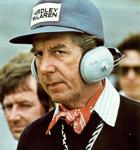 |
|
1917 - 2002
Rob Walker was not a good racing driver. Instead he became an entrant whose superbly-prepared machines were driven by such well-known drivers as Tony Rolt, Reg Parnell, Stirling Moss, Tony Brooks, Maurice Trintignant, Jack Brabham, Jo Bonnier, Jo Siffert and Graham Hill. When the cost of running his own Grand Prix car became too much at the end of 1970, he helped sponsor the works Surtees team and became closely involved with the career of Mike Hailwood. More>> |
 |
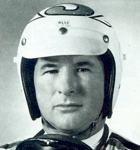 |
|
1921 - 2004
In 1946 Ward had his first attempt at motor racing. For some time he had been allowed to act as mechanic during leave from the Air Force, looking after a Willys-engined midget. He yearned to race one and, at last, one day the driver did not arrive for a meeting. Ward jumped into the vacant cockpit. But although the seeds of a racing career were sown that night at Wichita Falls the actual result was dismal: Ward spun and was hit by another competitor. More>> |
 |
 |
|
1939 - 1998
Roger Clark's competitive spirit was always fiercely displayed - he was an outstanding natural competitor at his exciting, and frequently sideways, best. As the son of a garage proprietor, Roger's upbringing on the outskirts of Leicester (UK) provided a fitting background for an enthusiast. More>> |
 |
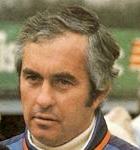 |
|
b. 1937
Of German descent (his grandfather came from Leipzig), Roger Penske was born in Philadelphia on 20 February 1937. His wealthy father was vice-president of a warehousing firm and taught Roger early to earn money. When Roger was nine, he and his father became regular attendees at the Akron Sportsman's Park, watching midget-car racing. He said, 'We went for years. It was built into my blood, and I knew I'd race some day.' More>> |
 |
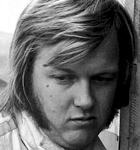 |
|
1944 - 1978
Throughout his career, Peterson quickly adapted to every sort of car he drove, flinging each more powerful model around just as he threw the karts around in Sweden to win six national titles. In other forms of racing he drove Ferrari sports cars, drove for BMW in Group 5 between 1974 and 1978 and campaigned a Camaro in the International Race of Champions series. He expressed a dislike for Indy racing as it would not be much fun driving to strict orders from the pit around a boring oval circuit. It is this enthusiasm and love for driving that made Ronnie so competitive: you can only do something well if you enjoy doing it, and during his all too short career no one enjoyed race driving more than Ronnie Peterson. More>> |
 |
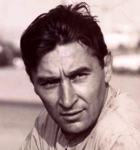 |
|
b. 1922
Roy Salvadori was an exceptionally accomplished racing driver whose career spanned twenty seasons. An all-rounder, he won countless races in Formula One, Formula Two, sports, GT and touring cars, and competed professionally for leading works and private teams. More>> |
 |
 |
|
1901 - 1959
Caracciola started his competition career in a very modest way. Born in 1901, he made his track debut in 1922, driving a Fafnir light car, with which he won a class victory at the Berlin Avus track. The next year, he began racing in earnest, with a borrowed Ego, matched against makes of such stunning obscurity as the Omikron, the Coco and the Grade. Parts to bring the Ego up to racing trim had been provided by the car's makers on the firm understanding that if Caracciola won the parts were free, but if he lost he'd have to pay for them. As he had just blown his remaining cash on a square meal before the race, the threat was of little moment. More>> |
 |
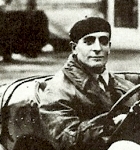 |
|
1887 - 1981
The media is filled with ex racing drivers that made the successful switch to journalism after their morotsport retirement. But the story of Sidney Charles Houghton "Sammy" Davis is quite different, as this is the story of a man who, as a motoring journalist, decided in his 30's to become a competition driver. The fact that he made it to international standard makes the story all the more remarkable. More>> |
 |
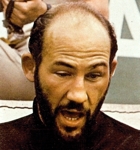 |
|
b. 1929
Born Stirling Crauford Moss on 17 September 1929, he was the son of Alfred and Aileen Moss who had both taken part in motoring competitions. Alfred Moss had driven a Fronty-Ford into 14th place at Indianapolis in 1924, while Aileen Moss had driven in many rallies and trials, winning several of them, too. Although the Moss family was not in the motor trade - his fither was a dentist and a farmer - sporting machinery was much in evidence and the talk was all about motor racing, so Stirling Moss grew up indoctrinated with racing lore. Education was undertaken unwillingly, largely at Haileybury public school and the youthful Moss was destined, it seemed, for the catering trade. More>> |
 |
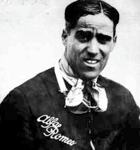 |
|
1892 - 1953
Tazio Nuvolari may have been a man of small stature, but he possessed uncanny car control, who appeared to take enormous risks yet none of his accidents kept him from the cockpit of a car for long. Not only did Tazio have a thirst for speed, but he appeared to have a flirtation with death. As a boy, he attempted to jump off a roof with a home-made parachute, somehow without breaking any bones, and later he acquired a dismantled Bleriot aeroplane. Attempting to take off, he found his machine careering into a haystack. It burst into flames, but Nuvolari had only an injured shoulder. More>> |
 |
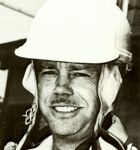 |
|
1893 - 1948
In his day, Eylard Theodore 'Ted' Horn was reckoned to be one of the America's greatest-ever racing drivers. But as you would expect, it was hard to find anyone outside of the USA to agree with the verdict or, indeed, who had actually heard of someone called Ted Horn. At the age of 21, Ted began racing on the Californian dirt tracks, and within a couple of years was kicking up the cinders all over the United States. He visited Indianapolis as a spectator in 1934, returned as a competitor in 1935 at the wheel of a works-sponsored Ford V8 - and dropped out of that race. More>> |
 |
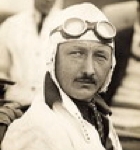 |
|
1896 - 1993
It may seem a long time ago for the car enthusiast of the 21st Century, but if you were to wind the clock back almost 100 years you would find a generation of motor-racing enthusiasts who found Sir Henry R. S. (Tim) Birkin the epitome of the glamour of motor racing, a fearless driver at the wheel of a great green Bentley, blue-and-white spotted silk scarf a-flutter at his throat. More>> |
 |
 |
|
b. 1938
Timo Makinen was one of the finest rally drivers to emerge from Scandinavia during the 1960s. His compatriots, Rauno Aaltonen, Simo Lampinen, Hannu Mikkola and Markku Alen, learned from Makinen. Born in Helsinki on 18 March 1938 Makinen gained an early grounding in motor vehicles because his father owned a large transport company. He was soon racing around the countryside, attracting the notice of the police, but luckily he began chaneling his energy into rallying and ice racing in 1960. The most popular cars in Finland were, naturally enough, Saabs and Volvos, so he used them to good effect, although on one notable occasion he drove a D-type Jaguar in an ice race. More>> |
 |
 |
|
b. 1937
Tom Trana was born in Kristinehamm, Sweden, on 29 November 1937. Both his parents were keen motor-sport enthusiasts, his father competing on motorcycles and his mother in cars. In 1956, as soon as he was old enough to hold a licence, Trana purchased an old Volvo which he rebuilt for racing and rallying. Trana won his class in many 1958 Swedish rallies and the following year he took second place in the Swedish Racing Championship to Volvo star Gunnar Andersson. In 1960 he conquered Andersson in the series and was given a car from Volvo with which he repeated his success in 1961 and 1962. More>> |
 |
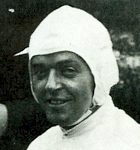 |
|
1893 - 1962
Tommy Milton‘s early ambition to become a racing driver, because he simply memorised the standardised eyesight test cards of the day! He had earlier shown promise as an automobile engineer and worked as a builder and tuner of racing cars. At the age of I7, he joined a barnstorming exhibition team driving a Mercer, but the ambitious Milton soon tired of the fixed results of the races in which he took part and was eventually sacked for disobeying team orders. He then joined the Duesenberg team which was enjoying considerable success at that time in the hands of drivers like Eddie Rickenbacker, Jimmy Murphy and Wilbur D'Alene. More>> |
 |
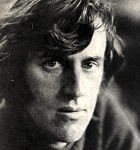 |
|
1941 - 1975
Tony Alcock was born in Salisbury, South Australia, and his big break in motorsport happened at the age of 34 when he started work for Graham Hill's Embassy Racing Formula One team after completing a season running the Bob & Marj Brown Thermax Birranas, with driver Bob Muir, in Formula Atlantic. A dedicated designer/constructor, Tony first went to England in the mid sixties and worked for both the McLaren and Brabham Formula One teams. He returned to Australia some years later, worked at Elfin and there designed and built the brutish Elfin ME 5 Chev sports car for Xiel Allen, and joined Allen's privateer racing team upon completion of the car. More>> |
 |
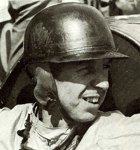 |
|
b. 1932
When Juan Manuel Fangio was planning his retirement from motor racing, he was asked who would succeed him as World Champion. He instantly named Tony Brooks - a prophesy that never came true because Brooks was up against such other talented British drivers as Stirling Moss, Mike Hawthorn and Australia's own Jack Brabham. More>> |
 |
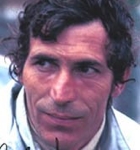 |
|
b. 1935
Elford's reputation grew immensely when he tied up the 1967 Grand Touring Rally Championship in his factory Porsche 911S, in the process making the young Elford a hot favourite for any "tarmac" rally he entered. His first time out in the Targa Florio, he took third place overall - typical of the application to detail racing enthusiasts around the world were getting used to. More>> |
 |
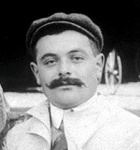 |
|
1881 - 1970
Victor Etienne Demogeot was born on August 14, 1881, at Bainville-sur-Madon. His father was shop superintendent in a foundry at nearby Neuves Maisons and it was in the machine shop of the foundry that Demogeot felt that he spent the most important part of his adolescence. Devoted to machinery, he began his formal technical schooling at age 12. Growing up with the bicycle, he became his region's cycle-racing champion at 18. Then came a stretch in the Engineering Corps of the French Army, following which he found employment as a draftsman for De Dietrich in Luneville. More>> |
 |
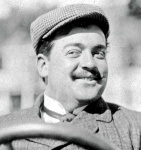 |
|
1881 - 1937
Vincenzo Lancia was a better driver than the records show. He was a great driver but not a lucky one. He tried hard, perhaps too hard. He drove in nearly all the big races of his decade and never scored a lucky win. Lancia still drove Fiats after 1906, but was by then in business for himself. On November 29, 1906, he formed a partnership with Fiat test driver Claudio Fogolin. Each put up 50,000 lire to start making cars on their own account. Before the end of the year they rented a small factory in Turin, previously used by Itala. Lancia devoted himself to design and engineering work and Fogolin took care of the business side. More>> |
 |
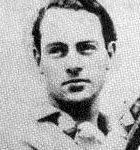 |
|
1912 - 1979
The racing career of Whitney Willard Straight reads like the plot in an Indiana Jones movie script. He rode motorbikes, drove cars and learned to fly before he was 17, bought and raced a Grand Prix Maserati at 19, set up his own team of three GP Maseratis when he turned 21 and retired from racing at amazingly young age of 23, having turned down an offer to drive for Auto Union in 1935. The truth was, he did want to drive for Auto Union in 1935 but their works car was tricky to handle. More>> |
 |
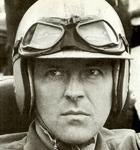 |
|
1928 - 1961
Wolfgang Graf Berghe von Trips was an aristocrat, a tall blond German Count who was a lover of fast cars and of life itself. Familiarly known as 'Taffy', von Trips survived a succession of high-speed accidents until he crashed to his death at Monza in 1961. After having dabbled in racing for a number of years, Von Trips entered an old Porsche in some rallies. His success persuaded him to contact Porsche's racing director, Huschke von Hanstein, to ask for free parts to modify his machine. More>> |
 |
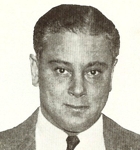 |
|
1895 - 1948
OF ALL THE larger than life team of racing drivers known as the Bentley Boys, the most outrageously extrovert was Woolf Barnato, whose vast personal fortune helped the Bentley Company survive its mid-1920s financial crises; yet the Barnato millions dated back only one generation to the 'Babe's' father Barney, son of an East End of London shopkeeper called Isaac Isaacs. More>> |
|
|
|



